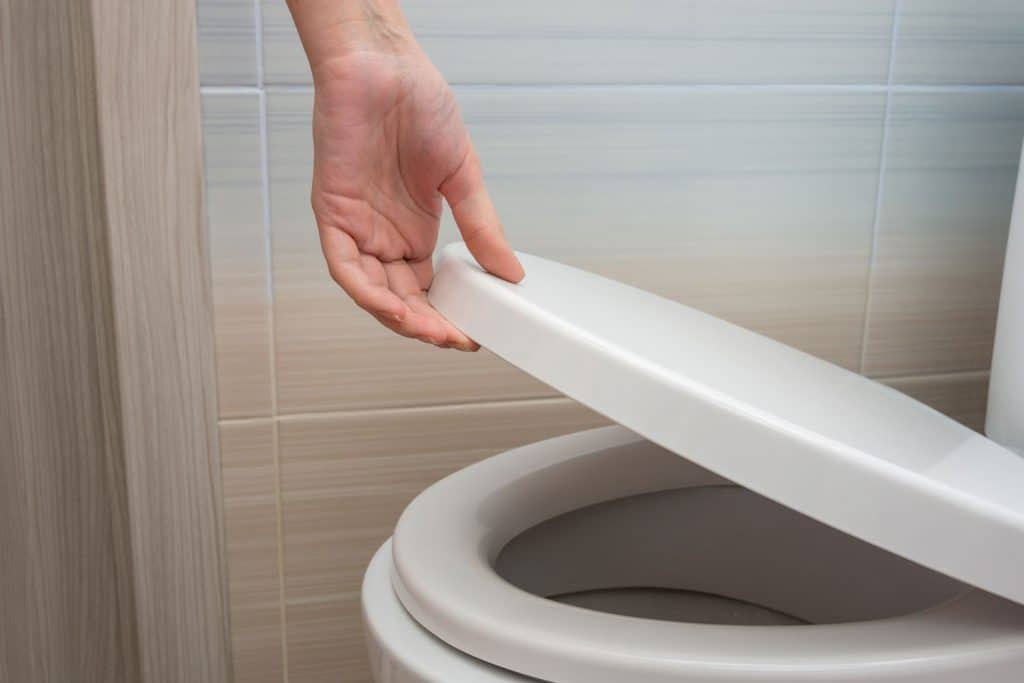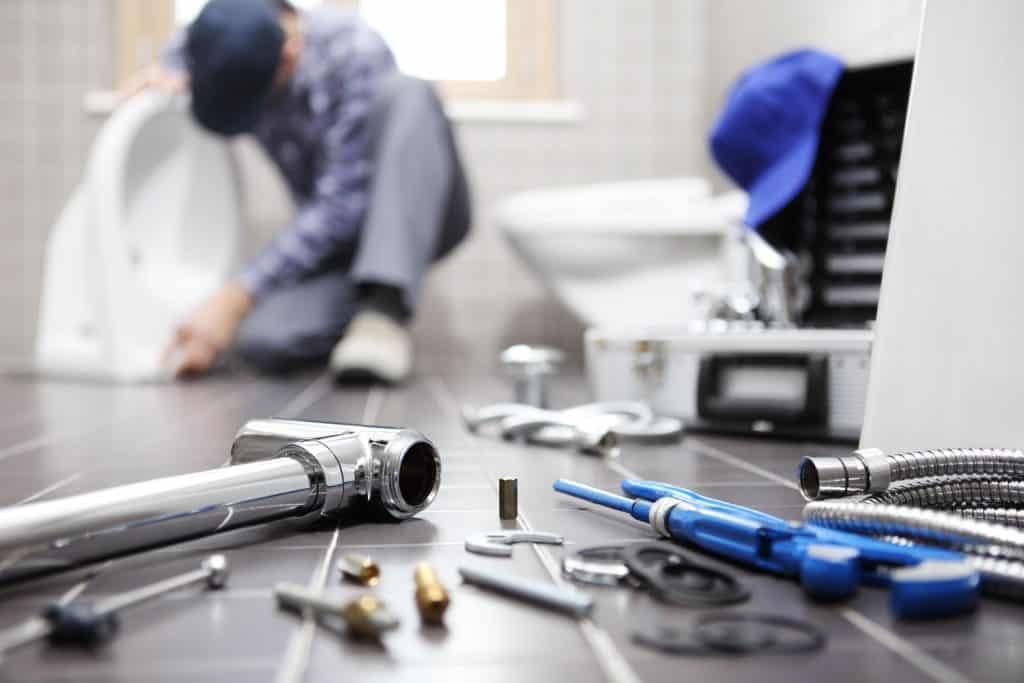After years of use, you start to notice cracks are forming in specific areas of the toilet. They might not look like much. But, they need to be sealed as soon as possible. Some cracks may require more attention than others. If you're wondering how to fix a cracked toilet tank, bowl, or base, let's find out how!
To fix the crack, you need to identify how serious the situation is. If it's too large of a break, you might need to replace the whole unit. However, if it is a hairline crack, it is repairable. Some individuals cases will require different materials. In general, to fix a hairline crack, you need to:
- Turn off the water supply.
- Drain the area of water.
- Dry the spot as much as possible.
- Apply plumber's putty or caulk to the crack.
- Wait for the putty to dry.
- Reconnect the water supply.
These are the general steps to fixing a crack on the toilet. Of course, some areas might need additional steps. You might need to remove an extra component before you apply the putty. Additionally, you might want to know what causes a crack on the toilet. If you'd like to find out more, keep reading ahead.
![A worker caulking the toilet tank, How To Fix A Cracked Toilet Tank, Bowl, Or Base [A Complete Guide]](https://homedecorbliss.com/wp-content/uploads/2021/08/How-To-Fix-A-Cracked-Toilet-Tank-Bowl-Or-Base-A-Complete-Guide-683x1024.png)
Assessing the Situation
The first thing we have to do before fixing the crack is determining how serious it is. One type of crack you may see is known as a hairline crack. This term comes into use when cracks are tiny and hairline-like. Hair-line is referring to its size. Since they are small, they cause no structural problems.

However, that does not mean you should wait to fix it. These types are easily repairable with the use of putty or caulk. Cracks that penetrate fully through the bowl can't be repaired. Instead, you'd be better off replacing the whole unit.
Location of the Crack
The location of the crack is another crucial aspect. Sometimes fractures can lead to leaks on the floor or drain. In some cases, you might be able to leave the area alone.
The three types of cracks you will need to identify are:
- Below the waterline cracks
- Above the waterline cracks
- Invisible cracks
Above the Waterline
You can safely ignore cracks above the waterline. That is, as long as it is not damaging to the structural support. Additionally, in most cases, water will not leak through these types of fractures. However, you need to monitor it closely.
Mark the start and end of the crack to check if it is still growing. If you need a reference, take a picture of it daily to see the progression. Should the crack continue to grow, you will need to fix it.
Below the Waterline
Cracks below the waterline require your attention. In this case, you will most likely see leaks or water retention. In most cases, if you can see a crack below the waterline, you will have to replace the unit.
Invisible Cracks
As the name implies, you won't be able to distinguish where the crack is. The two tell-tale signs of an invisible crack are missing water or standing water on the floor. You are more likely to witness water settling at the base of the toilet.
In rare scenarios, the water will begin to leak through the drain. You'll notice this when there is less and less water present in the bowl. Although it might seem like the water is mysteriously disappearing, it's actually leaking into the drain.
Now that we know what we're dealing with let's get to fixing the problem!
Fixing the Crack
Turn Off the Water Supply
To begin fixing the crack, you will have to shut off the water supply. The way to do this is by turning the shutoff valve clockwise until it stops. The shutoff valve is located under the toilet tank. Finish draining the tank and bowl by flushing the toilet. Lastly, remove the water left in the tank by ringing out a sponge into a bucket.
Dry the Spot As Much as Possible
Wipe the entire area as dry as possible. Since you might use epoxy for the repair, you want a surface that allows it to react well. You will also want to clean the surface thoroughly. After, use sandpaper to give the area of the crack some texture. This way, the bonding material will work better.
Apply Plumber’s Putty or Caulk to the Crack
We may include affiliate links and curated AI content to highlight top design styles.
Click here to see this plumber's putty on Amazon.
This step depends on the bonding agent that you are using. If you are using epoxy, mix the catalyst and the resin per the manufacturer's instructions. Using a putty knife or spreader, smooth and flatten the epoxy or plumber's putty. Work at a quick pace as epoxy only lasts 30 minutes before it begins to harden.
Click here to see this epoxy resin on Amazon.
On the other hand, a plumber's putty won't harden. It stays malleable for most of its usage. Otherwise, once you finish applying it to the crack, let it cure overnight.
Reconnect the Water Supply
For the final step, you will open the shutoff valve to the toilet. Do it by turning the handle all the way counterclockwise. Once the toilet refills, do some testing. Flush the toilet and check if leaks still occur.
What Causes a Crack in a Toilet?
You might be wondering, what causes it to fracture in the first place? The bathroom isn't an area that sees high traffic. So, there wouldn't be too many ways for accidents to occur. Therefore, there shouldn't be too much damage to the toilet.
Impact
It shouldn't come as a surprise. Toilets are made of porcelain. Therefore, it's not indestructible.
One of the more obvious causes of a crack is impact. Maybe someone slipped in the bathroom. Or, a heavy item fell and hit the toilet on its way down.
DIY Mishaps
In its years of usage, have you ever done a DIY project on the toilet? Porcelain is a sensitive material. If you tighten bolts too much, it can cause a crack on the toilet.
Are you gentle when you place the lid back on top? Even sudden drops can cause a fracture. As some suggest, you should seek professional help if you need to repair the toilet.
Can a Toilet Bowl Crack on Its Own?
Another possible cause of a crack is age. Like most materials, aging makes the porcelain more susceptible to the development of fractures. In essence, it means the toilet bowl can crack on its own. It will take time until it reaches this point. However, external factors like temperature also speed up the process for the porcelain to break down.
How Do I Know if My Toilet Bowl Is Cracked?

Of course, before you enact a plan of action, you will need to be able to tell if a toilet bowl is cracked. The first sign is the more obvious one. There will be a noticeable fracture in the area.
Signs of a Crack
Though, cracks may not always show up this way. Some can sneak up on you. Other tell-tale signs of crack are water-related.
Is your bowl staying full? If not, you might notice a decreasing level of water. This situation indicates there's a crack in the bowl area.
Is the tank filling up as it should? If it won't fill, there's likely a crack in your tank.
Check around your floors. Is water showing up at the base of the toilet? It could show up on the ground through the base or by dripping down a crack in the bowl.
Safety Measures
If you feel it would be better to check by using your hand, some advise not to do so. The reason being that porcelain can contain jagged edges. So, when you're rubbing your hand on the surface, looking for a crack, you might cut your hand.
Due to the potential danger when feeling for the crack, you should stick to an eye test. If you can't catch the signs, it's time to seek a plumber's help.
How Long Does a Toilet Last?
The lifespan of a toilet varies depending on the situation. With a quick search, you would find that toilets can last from 15-50 years. Others suggest that it can last up to 100 years.
The responsibility of keeping it running for decades falls on you. The porcelain portion of the toilet lasts a long time. Other parts will begin to fail faster than the body portion of it. How quickly you act on the failing components determines how long your toilet lasts.
Water Hardness
Water hardness also affects how well you can flush the toilet. Hard water contains a large number of minerals. The crucial component that comes to mind is the jets on the rim. Hard water will leave limescale deposits making the toilet work less efficiently.
In the long run, it could shorten the lifespan of your toilet.
How Much Does It Cost To Replace a Toilet?

As mentioned, some cracks are not fixable. You will need a replacement toilet. As some suggest, it would cost around $221-$427 to replace a toilet. This amount covers the cost of labor and the unit itself.
It begins to edge towards the higher price range if you let a professional do all the work for you. If you want to remove some of the costs, you can remove the toilet yourself. Professionals should handle the installation of the new unit.
If you want to move the existing draining pipe to another location, the amount spent can easily exceed over $1000. Lastly, the cost will go up if there are any replacement of components necessary. It could cost anywhere from $20-$30 for each repair.
How Do You Get Rid of an Old Toilet?
It begs the question, how and where do we get rid of a toilet? After you've replaced the old one, where can you dump it? You'd be happy to know that there is a range of options for you to choose from.
Curbside
The most basic option is to go for curbside disposal. Though, you will need to consult with the trash collecting agency first. This way, you can place the toilet on the curb on the correct week. You should also make sure to follow the requirements for leaving it on the curb.
In general, it should not contain any water. Take out the seat and tank covers. Lastly, remove any fasteners.
Recycle
This option is limited to some areas. Cities with better recycling programs will accept porcelain units. You will have to check with local officials to check if they offer this. If they don't, some components are still recyclable.
Donation
Some charities will be willing to accept a toilet. Of course, it must be in good enough condition. This choice only applies to you if you've decided to replace a toilet with minimal damage. Hairline cracks that don't hamper the structural integrity of the unit should work fine. In any case, call in ahead of time to see if a nonprofit is willing to take it off your hands.
Final Takeaway
Although it might seem like the end of the line for the toilet, fixing cracks is a simple process. However, some fractures are too deep to seal. In those cases, it's better to go for a replacement unit. We hope you found the information above insightful.
Before you go, do you have other toilet concerns? Maybe you want to add a bidet to your existing one. If so, check out our post here to find out how to do so.
Additionally, you might want to find out more about the lifespan of a toilet. If the answer wasn't enough, find out more by checking our post here. Until next time!




